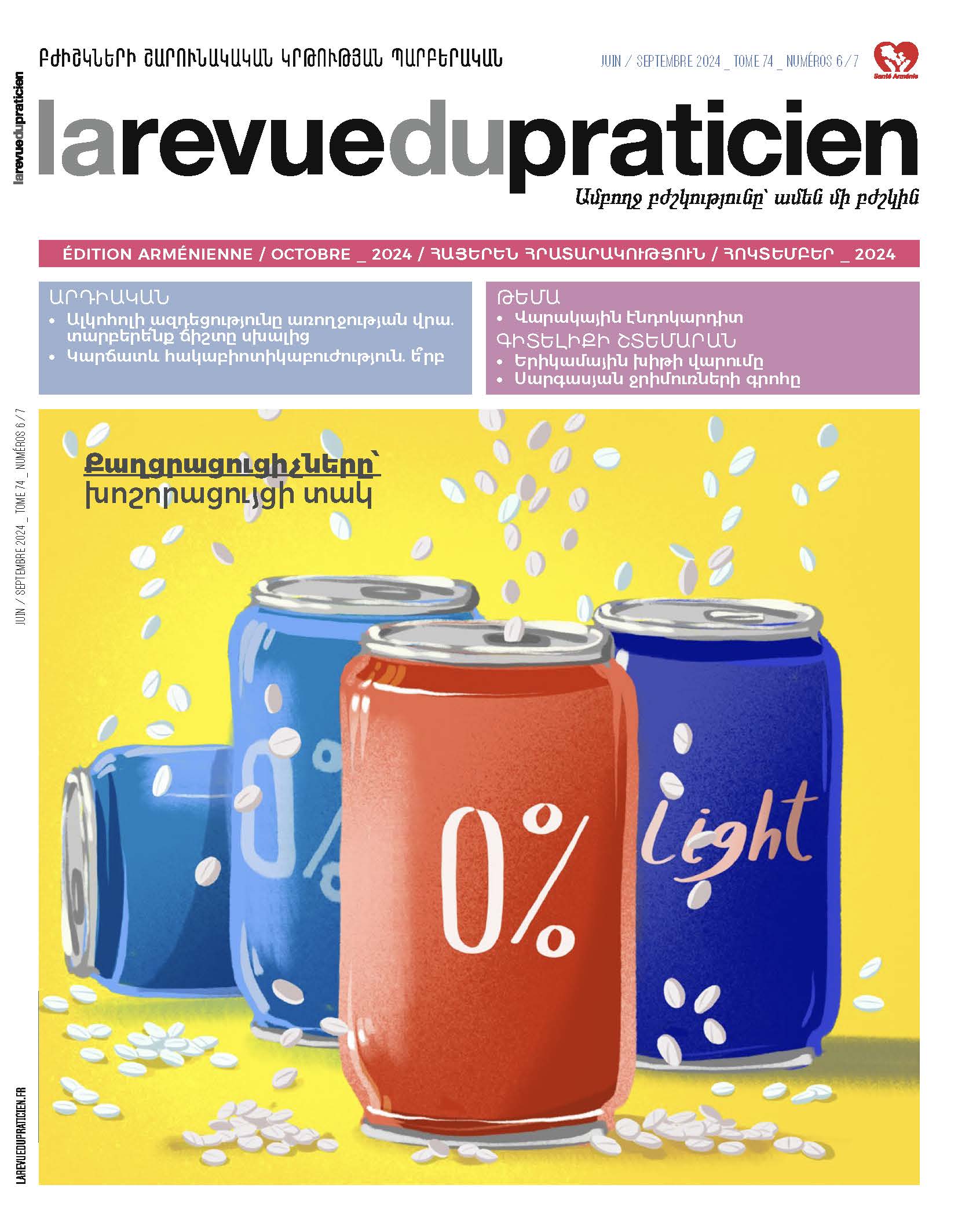Վարակային էնդոկարդիտ. ախտորոշման գործընթաց 27
Anne Bernard, Nicolas Chane-Sone, Fanny Dion, Adrien Lemaignen.Ամփոփագիր
Վարակային էնդոկարդիտի ախտորոշումը հաճախ խրթին է տարաբնույթ կլինիկական դրսևորումների պատճառով: Համաճարակաբանությունը փոխվել է՝ ավելի սուր ձևերի, տարատեսակ հարուցիչների ի հայտ գալով և ներսրտային բուժպարագաներ կրող հիվանդների շրջանում տարածվածության աճին զուգընթաց: Ախտորոշումը հիմնվում է կլինիկական կասկածի վրա, որը հաստատվում է մանրէաբանական տվյալների և պատկերային հետազոտություններով էնդոկարդի ախտահարումների հայտնաբերմամբ: Էխոսրտագրությունն առանցքային դեր է խաղում, իսկ պատկերային հետազոտության առաջատար մեթոդները հնարավորություն են տալիս բարելավելու ախտորոշման արդյունավետությունը: Սրտաբանության եվրոպական ընկերակցության (ՍԵԸ)՝ 2023 թվականի խորհրդատվությունը, 2015-ի պես, հաստատել է բազմամեթոդ պատկերային հետազոտության վճռորոշ դերը՝ հիմնական չափանիշների ներքո միավորելով ցանկացած պատկերային հետազոտությամբ հայտնաբերված ախտահարումները: Այսպիսով, ախտորոշիչ չափանիշները փոփոխվել են՝ համաճարակաբանական և պատկերային հետազոտության նոր տվյալները հաշվի առնելով: Առաջարկվել են ախտորոշիչ ռազմավարության տարբեր ալգորիթմներ՝ կախված այն բանից՝ բուժառուն կրո՞ւմ է պրոթեզային նյութ, թե՞ ոչ: Էնդոկարդիտով զբաղվող բազմամասնագիտական թիմն այս ախտորոշիչ մոտեցման հիմնաքարն է, որի նպատակը բուժառուների վարումը բարելավելն է:
MeSH.
Algorithms,
Echocardiography/methods,
Endocarditis/diagnosis,
Endocarditis/therapy,
Endocarditis,
Humans.
Հիմնաբառեր.
էնդոկարդիտ:
